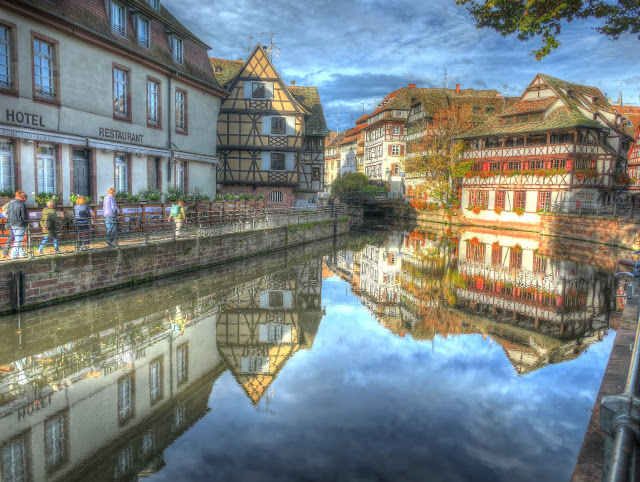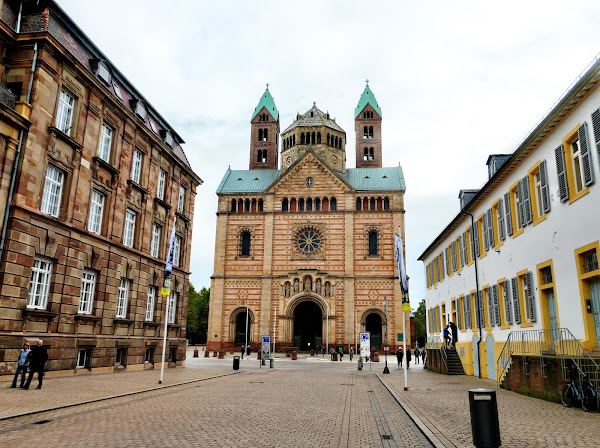Strasbourg, France
 |
| A quiet Sunday afternoon in Strasbourg |
We arrived in Strasbourg around 7:30 on Sunday morning. By 9:00 we were off for a three-hour walking tour of this fascinating city. It is the largest port on the Upper Rhine and is the cultural center of France's Alsace region. Its location on the French-German border and its alternating governance by the two countries has created a intriguing blend of cultures. The Romans founded the city as Argentoratum. It was first mentioned in 12 BCE. It celebrated its 2000 anniversary ten years ago. The Little Ill river splits and surrounds the Old Town, effectively creating an island. It is easy to see how this was a highly defensible location.
The large photo above shows part of what is known as Petit France. It is part of Strasbourg's Grand Ile UNESCO World Heritage Site and is the city's most romantic spot. This was our first stop on a pleasant Sunday walk through this ancient town. Most of the buildings are from the Medieval Period. The history of this area of Strasbourg shows how something beautiful can grow out of something ugly and unappealing. This area was known as the Tanners' District. The proximity to the river was perfect for tanning hides which creates noxious residue and fumes. It was hardly a desirable area. In fact the Grand Magistsrate isolated the sick in the tanners' district. When French soldiers returned from fighting in Italy, they were sent to a hospital there to be treated for syphilis. The locals referred to it as the French disease and thus the area as Little France. Why they didn't call it the Italian disease is a mystery.
 |
| Place Kleber |
From there we proceeded to Place Kleber named to honor Jean-Baptiste Kléber, one of Napolean's generals and a native of Strasbourg. This is a large plaza surrounded by buildings showing a variety of periods of Strasbourg's life especially when it was governed by Germany and then France. The plaza is dominated on one side by a building which is now sued for city administration, but which was built in the late 18th Century to house German troops occupying the area.
 |
| Notre-Dame de Strasbourg |
 |
| J. M. Obrecht of Ferme Obrecht |
We began to investigate areas a couple of blocks away from the cathedral and found an art show in a courtyard covered with wisteria. There were several artists but two were most intriguing. There was a photographer with some great images but there was a vegetable and fruit artist that intrigued us. He was the owner and operator of Ferme Obrecht, outside Strasbourg. It produces both contemporary and legacy fruits and vegetables and presents them as works of art.






_Enhancer_small.jpg)
Comments
Post a Comment